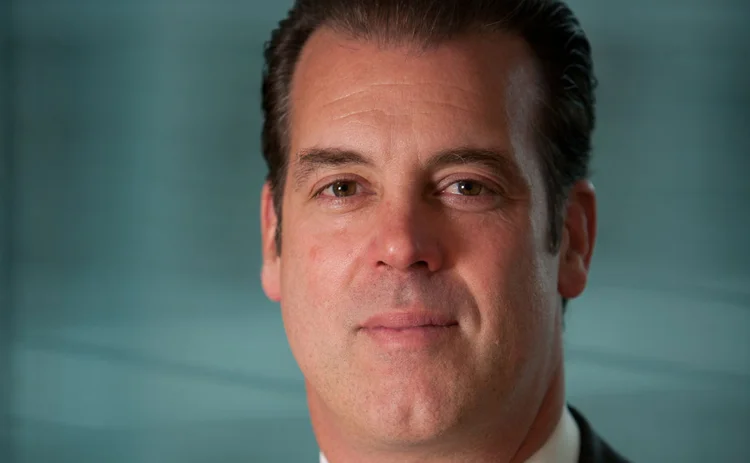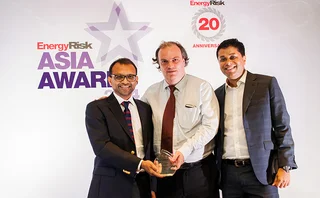
Asia precious metals house of the year: Citi
Citi builds full-service Asia strategy as others exit market

Energy Risk Asia Awards 2016
The ultimate aim of Citi's precious metals business is to become a market leader in both physical and financial transactions, as well as "everything in-between", according to Rick McIntire, the bank's global head of metals sales and trading. As major competitors such as Barclays and Deutsche Bank exit the space or downsize their commodities offerings, Citi aims to fill the void in the Asia-Pacific precious metals markets, providing clients with access to capabilities across the full spectrum of financing and risk management needs. "We want to avoid making our offering all about price, so we need to be a bit more clever," he says.
A key example of such innovation is a financing structure that Citi's precious metals desk created for a top-tier Chinese jeweller. A client of Citi's for three years, the company wanted to obtain inventory while also preserving working capital; it was also concerned about gold price volatility and wanted to protect revenue streams and financing costs. Citi offered a structure that was treated as a short-term precious metal borrowing, which was cheaper than using a US dollar-denominated loan, and included derivatives to hedge the price of gold. The bank warehoused the risk to limit the market impact.
This deal encapsulates the value proposition Citi is developing for the Asian precious metals market, says Dhiraj Singh, head of metals sales at Citi for Asia. He says the client now sees the bank "not only as a hedging counterparty but also as a source of additional funding". He adds that the bank now plans to replicate the transaction with other clients that need more efficient gold inventory financing solutions combined with price risk-management capabilities.
Citi's precious metals desk claims to have seen growing demand for more complex, bespoke, multi-asset solutions from clients across Asia over the past year. The sources of complexity are varied. Not only does the bank have to navigate local regulatory issues, but also global situations or events that will have an impact on commodity prices. For example, earlier this year, the bank provided an Indonesian client with a zero-cost collar to hedge gold prices for 12 months. The transaction was completed in time for the client to meet key project-financing deadlines, and also before the UK's referendum on membership of the European Union last June, allowing the producer to maintain upside participation in gold prices following the victory for the Leave campaign.
Citi has also developed strong relationships with central banks throughout the Asia-Pacific region to underpin its precious metals leasing business, which serves a range of market participants including refineries, petrochemical companies and jewellers. A well-rounded portfolio of deposits, leases and producer-hedging activity supports the creation of more innovative, competitively priced solutions for clients. A source in a precious metals procurement role in the oil trading unit of Korean multinational SK, has been impressed with Citi's recent offering in this space: "For procurement, we need to lease precious metals. We lease from Citi and other banks. They are one of the best players in the market. Citi offers more competitive terms compared to several others."
According to McIntire, Citi has worked to broaden this part of its business on a country-by-country basis across the region in recent years. "The overarching theme [of our leasing business] has been one of growth and market share capture. So, whereas three years ago we were active in a single jurisdiction, we've since been able to ride that success and expand rapidly into the other countries around the region. It is clear that the well-documented contraction of providers has left a big gap and we have been able to fill that gap."
Citi's attempts to establish its precious metals business as the go-to bank for market participants throughout the Asia-Pacific region certainly seem to be paying off. Metals revenues tripled between 2014 and 2015, according to the bank, and continue to be the second-largest contributor to regional revenues, comprising roughly a third of its global precious metals business. McIntire says the bank is still adding new customers, particularly in the Asia-Pacific region, while rivals are simply trying to cling onto their existing clients.
"We have positioned our business to be more nimble than the competition," McIntire says. "Since we are in client-acquisition mode, that has enabled us to be more focused and more competitive, and to take market share from larger competitors."
Only users who have a paid subscription or are part of a corporate subscription are able to print or copy content.
To access these options, along with all other subscription benefits, please contact info@risk.net or view our subscription options here: http://subscriptions.risk.net/subscribe
You are currently unable to print this content. Please contact info@risk.net to find out more.
You are currently unable to copy this content. Please contact info@risk.net to find out more.
Copyright Infopro Digital Limited. All rights reserved.
You may share this content using our article tools. Printing this content is for the sole use of the Authorised User (named subscriber), as outlined in our terms and conditions - https://www.infopro-insight.com/terms-conditions/insight-subscriptions/
If you would like to purchase additional rights please email info@risk.net
Copyright Infopro Digital Limited. All rights reserved.
You may share this content using our article tools. Copying this content is for the sole use of the Authorised User (named subscriber), as outlined in our terms and conditions - https://www.infopro-insight.com/terms-conditions/insight-subscriptions/
If you would like to purchase additional rights please email info@risk.net
More on Metals
Interview: Can Matthew Chamberlain rescue the LME?
London Metal Exchange CEO identifies problems, awaits contract and fee structure revamp feedback
Base metals dealer of the year: BNP Paribas
French bank expands hedging and finance solutions to mainland China
LME Clear ‘welcomes scrutiny’ of CCP risk management
Oversight from clearing members is good for central counterparties, says LME Clear CEO
Metals house of the year: SG CIB
Barclays and Jefferies Bache deals highlight bank’s commitment to metals
Metals traders shun clearing due to Emir, says LME chief
Emir segregated accounts pushing firms to trade OTC, says Jones
LME eyes Asian growth while dealing with regulation
Garry Jones on China, warehouses, clearing and financial regulation
Energy Risk Asia Precious Metals House of the Year: ANZ
ANZ connecting physical players with reach and structuring ability
Precious metals dealers search for better benchmarks
Increasing participation seen as crucial to repairing pricing








